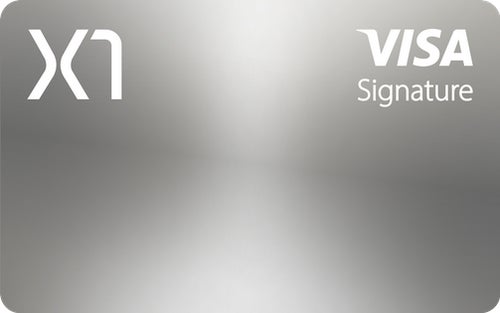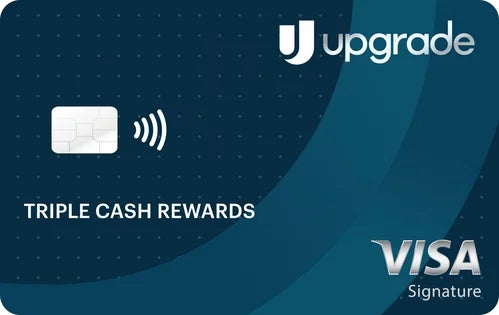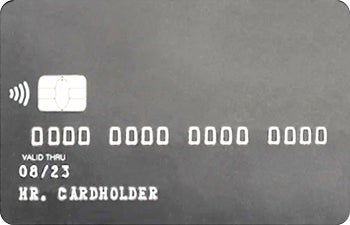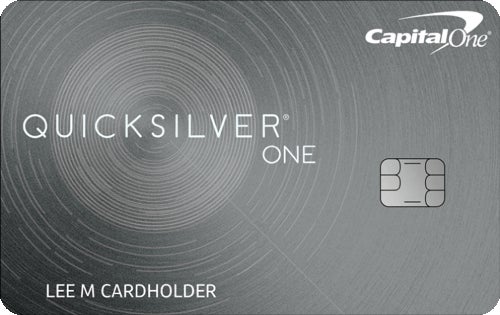You’ve probably heard the term “secured credit cards” more often than “unsecured credit cards.” That’s because unsecured credit cards are actually just traditional credit cards -- you apply and get approved based on your income and credit score. They don’t require a security deposit as collateral like secured credit cards do.
If you’re searching for unsecured credit cards, you’ve likely been building your credit with a secured credit card and are ready to withdraw your security deposit and move on to better rewards and perks. The picks below are good for a variety of situations, budgets and credit scores. They should help you continue building your credit so you can eventually qualify for credit cards for good credit.
Upgrade Triple Cash Rewards Visa is a great option because it covers some of the most basic spending categories, and doesn’t encourage you to spend on extras like dining and travel. You get 3% cash back on home, health and auto purchases. These categories cover purchases like hardware stores, landscaping services, tires, car dealers, gym memberships, exercise equipment and more. And for all other purchases, you earn 1% cash back.
With a 14.99% to 29.99% APR, you can potentially qualify for a relatively low APR if you have good credit.
- Intro Balance Transfer APR
- N/A
- Intro Purchase APR
- N/A
- Regular APR
- 14.99% -29.99%
- Balance Transfer Fee
- Up to 5%
Upgrade Triple Cash Rewards Visa is a great option because it covers some of the most basic spending categories, and doesn’t encourage you to spend on extras like dining and travel. You get 3% cash back on home, health and auto purchases. These categories cover purchases like hardware stores, landscaping services, tires, car dealers, gym memberships, exercise equipment and more. And for all other purchases, you earn 1% cash back.
With a 14.99% to 29.99% APR, you can potentially qualify for a relatively low APR if you have good credit.
- Intro Balance Transfer APR
- N/A
- Intro Purchase APR
- N/A
- Regular APR
- 14.99% -29.99%
- Balance Transfer Fee
- Up to 5%
Petal® 2 “Cash Back, No Fees” Visa® Credit Card

The Petal 2 Visa Credit Card, issued by WebBank, is an unsecured card you may get approved for with a subprime credit score, and you won’t owe an annual fee. And while you can still earn up to 1.5% cash back on all eligible purchases with this card, it’ll require some patience and responsible card use.
With this card, you can earn 1% cash back on all eligible purchases. But if you make 12 on-time monthly payments, you’ll get bumped up to earning 1.5% on all eligible purchases. You may also earn 2% to 10% cash back on purchases at select merchants.
- Intro Balance Transfer APR
- N/A
- Intro Purchase APR
- N/A
- Regular APR
- 18.24% – 32.24% (Variable)
- Balance Transfer Fee
- N/A
The Petal 2 Visa Credit Card, issued by WebBank, is an unsecured card you may get approved for with a subprime credit score, and you won’t owe an annual fee. And while you can still earn up to 1.5% cash back on all eligible purchases with this card, it’ll require some patience and responsible card use.
With this card, you can earn 1% cash back on all eligible purchases. But if you make 12 on-time monthly payments, you’ll get bumped up to earning 1.5% on all eligible purchases. You may also earn 2% to 10% cash back on purchases at select merchants.
- Intro Balance Transfer APR
- N/A
- Intro Purchase APR
- N/A
- Regular APR
- 18.24% – 32.24% (Variable)
- Balance Transfer Fee
- N/A
Discover it® Cash Back** is a common unsecured card. It offers a decent cash-back program, but then the welcome bonus takes things to the next level.
You’ll earn 5% on quarterly rotating categories upon activation that feature common expenditures like restaurants, grocery stores, Amazon.com and gas stations (on up to $1,500 in quarterly purchases, then 1%). You’ll also earn the typical 1% back on all other purchases. With the Unlimited Cashback Match™, Discover will match all of your cash back earned at the end of your first year and deposit it to your account automatically. Depending on your spending habits, this is one of the best welcome bonuses on the market.
For more details on the rotating category and welcome bonus, check out our full review of the Discover it® Cash Back.
- Intro Balance Transfer APR
- 0% for 15 months
- Intro Purchase APR
- 0% for 15 months
- Regular APR
- 17.24% – 28.24% Variable APR
- Balance Transfer Fee
- 3% intro balance transfer fee, up to 5% fee on future balance transfers (see terms)*
Discover it® Cash Back** is a common unsecured card. It offers a decent cash-back program, but then the welcome bonus takes things to the next level.
You’ll earn 5% on quarterly rotating categories upon activation that feature common expenditures like restaurants, grocery stores, Amazon.com and gas stations (on up to $1,500 in quarterly purchases, then 1%). You’ll also earn the typical 1% back on all other purchases. With the Unlimited Cashback Match™, Discover will match all of your cash back earned at the end of your first year and deposit it to your account automatically. Depending on your spending habits, this is one of the best welcome bonuses on the market.
For more details on the rotating category and welcome bonus, check out our full review of the Discover it® Cash Back.
- Intro Balance Transfer APR
- 0% for 15 months
- Intro Purchase APR
- 0% for 15 months
- Regular APR
- 17.24% – 28.24% Variable APR
- Balance Transfer Fee
- 3% intro balance transfer fee, up to 5% fee on future balance transfers (see terms)*
X1 Card

The X1 Card is unique among high-caliber rewards credit cards, as well as unsecured cards. Unlike most credit cards which determine your credit limit using your credit score, the X1 Card uses your income. To verify your income, you’ll have to allow X1 access to your online bank account where your paychecks are deposited. X1 also grants exceptionally large credit lines compared to its competitors (the average initial credit line granted is $24,300). A big credit line may also help improve your credit score, as it provides a cushion for your credit utilization ratio, a major component of your credit score.
For more information, see our full review of the X1 Card.
- Intro Balance Transfer APR
- N/A
- Intro Purchase APR
- N/A
- Regular APR
- 15.50% – 27.75% Variable
- Balance Transfer Fee
- 2% of the amount of each transfer.
The X1 Card is unique among high-caliber rewards credit cards, as well as unsecured cards. Unlike most credit cards which determine your credit limit using your credit score, the X1 Card uses your income. To verify your income, you’ll have to allow X1 access to your online bank account where your paychecks are deposited. X1 also grants exceptionally large credit lines compared to its competitors (the average initial credit line granted is $24,300). A big credit line may also help improve your credit score, as it provides a cushion for your credit utilization ratio, a major component of your credit score.
For more information, see our full review of the X1 Card.
- Intro Balance Transfer APR
- N/A
- Intro Purchase APR
- N/A
- Regular APR
- 15.50% – 27.75% Variable
- Balance Transfer Fee
- 2% of the amount of each transfer.
Capital One QuicksilverOne Cash Rewards Credit Card
If you’re still in the credit range of 580 to 669, you may or may not qualify for the above picks. If you want a safer bet, the Capital One QuicksilverOne* offers one of the best cash-back rates for widely accessible unsecured credit cards. You’ll earn 1.5% cash back on all of your purchases with no limit, and you can earn 5% cash back on hotels and rental cars booked through Capital One Travel (terms apply) -- but you will have a $39 annual fee.
- Intro Balance Transfer APR
- N/A
- Intro Purchase APR
- N/A
- Regular APR
- 29.99% (Variable)
- Balance Transfer Fee
- $0 at the Transfer APR, 4% of the amount of each transferred balance that posts to your account at a promotional APR that Capital One may offer to you
If you’re still in the credit range of 580 to 669, you may or may not qualify for the above picks. If you want a safer bet, the Capital One QuicksilverOne* offers one of the best cash-back rates for widely accessible unsecured credit cards. You’ll earn 1.5% cash back on all of your purchases with no limit, and you can earn 5% cash back on hotels and rental cars booked through Capital One Travel (terms apply) -- but you will have a $39 annual fee.
- Intro Balance Transfer APR
- N/A
- Intro Purchase APR
- N/A
- Regular APR
- 29.99% (Variable)
- Balance Transfer Fee
- $0 at the Transfer APR, 4% of the amount of each transferred balance that posts to your account at a promotional APR that Capital One may offer to you
What is an unsecured credit card and how does it work?
An unsecured credit card is a standard credit card that does not require a security deposit like a secured credit card. If your credit is damaged or limited, you may not get approved for an unsecured card and may need to provide collateral to acquire a secured card.
Pros
Certain unsecured credit card have lower credit requirements
Unsecured credit cards tend to offer better rewards and benefits
Help establish better credit scores through on-time payments
Do not require an upfront deposit, like most secured credit cards
Cons
Harder to qualify for than a secured credit card
Access to a higher credit line could entice you to spend money you can’t pay back right away
Who should get an unsecured credit card?
If you’ve worked to establish better credit via a secured credit card and your credit scores are now in a better place, it’s time to move on to an unsecured credit card. Unsecured cards generally have better terms and features, including greater perks and higher rewards.
Tips for choosing the best unsecured credit card
Sometimes your credit card issuer will offer to upgrade your secured credit card to an unsecured credit card if you’ve shown responsible habits. But if you’re shopping for a new card or ready to upgrade from your secured card, here are a few things to consider when choosing the right unsecured credit card.
Rewards
Compare the rewards categories, the types of rewards earned and how you can redeem them in order to identify the cards that will work best for you.
Credit card issuers will outline which purchases you can earn rewards on with your credit card. Generally speaking, rewards cards come in three flavors: flat-rate rewards, rewards for specific categories and rewards that change or rotate (for example, each quarter of the year or account billing cycle).
A flat-rate rewards card will earn rewards for every purchase you make at the same rate (like 2%). Rewards cards for specific categories earn you higher rewards rates on certain types of purchases, like groceries, gas or eating out. A credit card with rotating rewards works in a similar way, except the higher-tiered categories will change each quarter and may need to be activated manually.
Rewards credit cards typically earn rewards as cash back or points. Cash back generally can be redeemed for statement credits to lower the overall balance of your credit card account, deposited directly into your bank account or used at check out with specific merchants.
Some cash-back cards may earn literal cash back (e.g. 2% of the purchase price, issued in dollars) while others may earn in the form of points (e.g. 2X points for every $1 spent) that can be turned into cash when redeemed. For those point-based cash-back cards, earning 1X points is the same as 1% cash back.
Points generally have more redemption options and may be worth more or less than 1 cent depending on how they’re used. Some standard redemption options include gift cards, using them for merchandise or donating them to charity.
Travel cards usually earn their rewards as points or miles. Some points may have a standard value for all redemptions (e.g., 1 cent per point), while others may give you greater value for specific redemptions (e.g., travel at 1.25 cents per point). Depending on the program, you may be able to transfer your points to other airline or hotel programs for even greater potential value and flexibility.
For the cards that earn miles, those are usually airline credit cards. These rewards are often best used for flights on one specific carrier and its partners. For that reason, it’s almost always best to avoid redeeming them for rental cars, hotels, and other non-air-travel options.
APR
A credit card’s annual percentage rate, or APR, is the rate at which your credit card balance will accrue interest over the course of a year. Should you revolve a balance from month to month, you’ll be charged interest at the end of your billing cycle at a monthly rate (i.e., your APR divided by 12). Generally, the better your credit, the lower your APR.
A good rule of thumb when it comes to credit cards -- whether secured or unsecured -- is to try to pay off your entire statement balance every month. That way, you won’t need to worry about any interest charges.
However, if you’re unable to pay your full statement balance, try to pay more than the minimum required payment. That way, you’ll lessen the amount of interest you’ll accrue and get the debt paid off faster
Annual fee
Some unsecured credit cards charge a yearly fee to have them. If you’re interested in an unsecured card with an annual fee, you’ll want to make sure that it fits into your budget. That means generating enough rewards through your normal spending and using any of the included benefits to cover the annual fee, and then some.
If the credit card has a welcome bonus, reaching it through normal spending is a good way to help cover this fee initially. Typically, if a card carries an annual fee, it’ll have higher rewards and better card perks, which may help offset the annual fee.
If you can’t cover your annual fee with rewards, benefits or statement credits, consider a no-annual-fee credit card.
Eligibility
Your credit score will help determine your credit card terms. You’ll typically secure better terms -- like a lower APR -- with a higher credit score.
Unsecured credit cards have credit score requirements that vary by lender and card type. Credit cards with higher credit requirements often boast better features, like lucrative welcome bonuses, higher reward rates and better card perks.
Some credit card issuers offer preapproval, so you can check to if you’re likely to be approved for a card without affecting your credit. Just keep in mind that even if you’re preapproved for a credit card, it doesn’t guarantee you’ll get the card.
In contrast, the best secured credit cards typically have much easier approval requirements. Some will approve you with low credit scores or even no credit score at all. Instead, they require a security deposit (e.g., $200), which may fund your credit line.
Other benefits
Unsecured credit cards typically have more card perks than secured credit cards, such as travel insurance, purchase protections or extended warranties.
The more advanced unsecured credit cards sometimes offer annual statement credits for travel or specific purchases. Generally speaking, a card with these types of perks will require an annual fee, so be sure the card matches your budget and that you’re able to take full advantage of whatever perks the card includes.
How to get the most from your unsecured credit card
The point of applying for an unsecured credit card is usually to avoid security deposits because you’ve improved your credit score to qualify for better card products. If that’s the case, you should continue to use the habits you built while improving your credit.
That means using your unsecured credit card like it’s a debit card. Only make purchases you can afford to pay off in full to avoid any interest charges.
Paying your balances off as soon as you can will also help you keep your credit utilization low, too. Maintaining a credit utilization ratio that’s below 30% can help improve your credit scores, and even better if under 10%.
Ideally, you would continue to use these good habits to raise your credit score further. This allows you to take advantage of better cards and lower interest rates for big purchases, like a car or house.
Alternatives to an unsecured credit card
If you’re still working to repair your credit, the obvious alternative to an unsecured credit card would be a secured credit card. Once your scores have improved, you can start to look into whether you’d qualify for an unsecured credit card.
There are ways to build credit without a credit card, too. You could use a credit builder loan, which is like a personal loan, only you receive the money at the end rather than upfront. A standard personal loan could also work -- they typically have longer repayment terms and lower interest rates than credit cards.
How to apply for an unsecured credit card
Depending on the issuer, you may have the option to graduate or upgrade directly from a secured credit card to an unsecured one. If so, it usually counts as a product change and therefore won’t require you to fill out another application. Even better, it won’t affect your credit score.
- Find a card that matches your budget
- Follow one of the links above to be taken to the card issuer’s website
- Fill out an application with all of the required financial and personal information
- Use your card responsibly and always pay your bill on time
FAQs
Many card issuers -- including Capital One, American Express, Bank of America and Discover -- offer cardholders tools to monitor their credit score for free. You can also check your credit score and credit reports with the three credit bureaus, Experian, Equifax and TransUnion.
This type of credit card usually requires an upfront deposit equal to the credit limit. So, for a card with a credit limit of $500, you’d need to deposit $500. Secured credit cards are still subject to late and rejected payment fees and generate interest on outstanding balances. As such, a secured credit card presents lower risk to card issuers and allows them to extend lines of credit to borrowers who don’t have good credit or meet the minimum credit score threshold.
Credit scores are calculated by looking at a variety of factors related to your personal credit, including length of credit history, payment history, amounts owed, new credit and credit mix. The exact weight of each factor depends on the score model (FICO, VantageScore or other) and your credit history. If, for example, you have no credit history, the other factors may be weighted more heavily.
Recommended Articles
Other cards we researched
- Credit One Bank® Platinum Visa® for Rebuilding Credit
- Total Visa® Card
- Milestone Mastercard®
*To qualify for the welcome bonus, you must open and fund a new Rewards Checking Plus account through Upgrade and make 3 qualifying debit card transactions from your Rewards Checking Plus account within 60 days of the date the Rewards Checking Plus account is opened. If you have previously opened a checking account through Upgrade or do not open a Rewards Checking Plus account as part of this application process, you are not eligible for this welcome bonus offer. Your Upgrade Card and Rewards Checking Plus account must be open and in good standing to receive a bonus. To qualify, debit card transactions must have settled and exclude ATM transactions. Please refer to the applicable Upgrade VISA® Debit Card Agreement and Disclosures for more information. Welcome bonus offers cannot be combined, substituted, or applied retroactively. The bonus will be applied to your Rewards Checking Plus account as a one-time payout credit within 60 days after meeting the conditions.
**All information about the Discover it Cash Back and Capital One QuicksilverOne Cash Rewards Credit Card has been collected independently by CNET and has not been reviewed by the issuer.
The editorial content on this page is based solely on objective, independent assessments by our writers and is not influenced by advertising or partnerships. It has not been provided or commissioned by any third party. However, we may receive compensation when you click on links to products or services offered by our partners.






